Contents
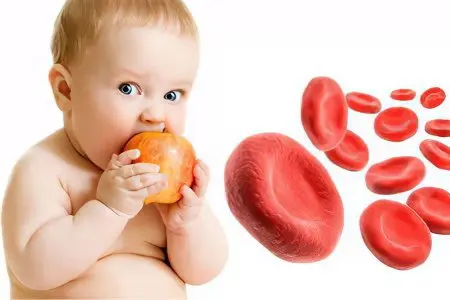
Iron deficiency anemia is a pathology that is provoked by a lack of iron in the child’s body. Moreover, this deficit can be both relative and absolute. In the general structure of anemia, iron deficiency anemia accounts for about 80% of all cases. Moreover, in childhood it occurs quite often – in 40-50% of cases. The disease does not bypass adolescents. Thus, anemia with iron deficiency is diagnosed in 20-30% of children in puberty.
Every parent who is faced with such a diagnosis begins to think about whether anemia is treated in a child. Of course, anemia in childhood is treated, but this issue must be dealt with very seriously.
Why do children need iron?
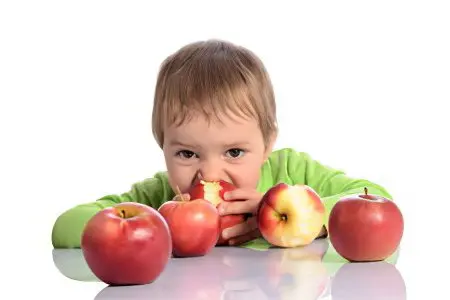
Iron is one of the most important trace elements in the child’s body. Without it, the synthesis of enzymes and proteins that are involved in metabolic processes is impossible.
Iron is part of a protein called hemoglobin. It is this protein that is responsible for transporting oxygen to organs and tissues. If there is not enough iron, then the hemoglobin content in the blood will decrease. This will provoke hypoxia (oxygen starvation) of all systems of the human body. Brain tissue reacts especially sharply to the lack of oxygen.
Iron is found in the composition of myoglobin, catalase, cytochrome peroxidase, as well as a number of other enzymes and proteins. Also in the body there is a depot of this trace element. It stores iron in the form of ferritin and hemosiderin.
When the baby is still in the womb, he receives iron through the placenta. Your baby needs the most iron between 28 and 32 weeks. It is at this time that the depot of this microelement is formed.
When a child is born, there should be 300-400 mg of iron in his body, which is stored in reserve. If the baby is born before the due date, then these figures are much smaller and amount to 100-200 mg.
The child’s body will spend this iron on the production of hemoglobin and enzymes, it takes part in the processes of tissue repair, in general, it is spent on meeting the needs of the body.
The baby grows very quickly, which causes a high need for his body in iron. Therefore, the reserves that he had at birth will run out very quickly. If the baby was born on time, then these reserves will be exhausted by 6 or even 5 months. If the baby was born too early, then the iron will last him only up to 3 months of independent life.
Iron that comes from outside is absorbed in the duodenum and jejunum. However, from the total amount that a person receives from food, no more than 12% of iron is absorbed. This process is influenced by the work of the digestive organs. The main source of iron is red meat.
Symptoms of anemia in a child

Signs of iron deficiency in a child are very diverse. There is a difference between how anemia manifests itself in children of 5 years old, compared with how anemia manifests itself in children of 10 years old. Therefore, parents should have complete information on this issue, which will allow timely detection of the first symptoms of anemia and seek medical help.
There are several syndromes that characterize childhood iron deficiency anemia: epithelial, asthenovegetative, dyspeptic, immunodeficiency, cardiovascular. They should be considered in more detail.
Symptoms of the epithelial syndrome. The skin is very dry, cracks appear on them. The skin is very flaky, becomes rough to the touch.
Hair and nails suffer. They become brittle, stripes appear on the nail plates. Hair falls out a lot.
The mucous membrane of the oral cavity is a kind of marker that not everything is in order with the intestines. The child’s lips and tongue may become inflamed. He also often has stomatitis, the manifestations of which are ulcers on the gums and the inside of the cheeks.
The skin itself looks unnaturally pale. Moreover, the more severe the stage of the disease, the paler the child will be.
Symptoms of asthenovegetative syndrome. Asthenovegetative syndrome develops against the background of oxygen starvation of brain tissues. The child often has headaches. The muscular frame of the baby is weak. There are sleep problems. Night rest becomes restless, sleep is superficial. This negatively affects the emotional sphere of the child. He becomes whiny, moody, apathetic, or overly excitable. He often changes his mood.
Drops in blood pressure are possible. If the child rises abruptly from his seat, he may even faint.
Vision is deteriorating. If we compare the child with peers, then he noticeably lags behind them both in physical and mental development.
An infant who develops anemia may lose the motor skills he has already acquired. Young children are normally very active. However, developing anemia significantly reduces this activity.
The child will suffer from urinary incontinence for a long time, as his sphincter is too weak to keep it in the bladder.
Symptoms of dyspeptic syndrome. Dyspeptic syndrome is expressed in a decrease in appetite, sometimes adolescent children even suffer from anorexia. Toddlers often spit up, they may have problems swallowing food, flatulence is often observed.
Some children suffer from constipation and other children from diarrhea.
Parents often note that the child’s taste is distorted, the baby may show cravings for inedible foods. For example, he has a desire to gnaw chalk or eat sand. Also, the child may like smells that are normally disgusting. This is the smell of gasoline, paint, varnish, etc.
The spleen and liver increase in size, which can be detected by a doctor during a standard examination. The likelihood of developing intestinal bleeding increases. In general, the organs of the digestive system work with disorders.
Symptoms of the immunodeficiency syndrome. A decrease in immunity may be indicated by a prolonged increase in body temperature to a mark of 37,5 ° C. The child gets sick more often. Infections have a protracted course and are difficult to correct.
Symptoms of the cardiovascular syndrome Cardiovascular syndrome develops only with a severe stage of anemia. The child’s pulse and breathing quicken, blood pressure decreases. The cardiac muscle undergoes dystrophic changes, murmurs are heard in the heart.
Causes of
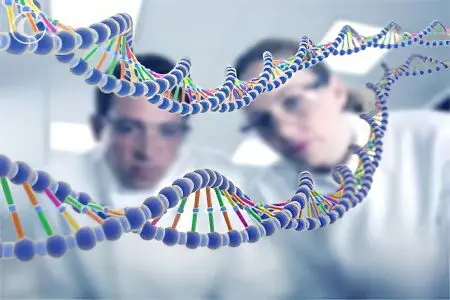
So that the baby does not experience iron deficiency immediately after birth, he must receive it with food. Per day, the volume of iron supplied from the outside should be equal to 1,5 mg. When the child reaches the age of 1-3 years, this requirement increases to 10 mg. On the day, the children’s body loses 0,1-0,3 mg of iron (for young children). And the costs of adolescents are 0,5-10 mg.
If the baby spends more iron than he receives from the outside, then over time he develops an iron deficiency. This condition is called iron deficiency anemia.
Causes of iron deficiency anemia in a child:
The hematopoietic system of the baby is not sufficiently developed.
He doesn’t get adequate nutrition.
The child has parasites.
The child is infected.
The child is in puberty. At this time, hormonal disruptions can lead to iron deficiency.
Also, a large amount of iron in the body is consumed during bleeding. They can occur during surgery, after injury. These are the most obvious causes of blood loss.
There are also internal factors that can cause bleeding:
Cancer pathologies.
Ulcerative colitis.
Diaphragmatic hernia.
Diverticulitis.
Hemorrhoids.
Teenage girls may experience heavy menstrual bleeding.
Some medications that a child receives can also provoke an iron deficiency in the body. Among them: salicylates, NSAIDs, glucocorticosteroids.
Bad habits that teenagers are often exposed to can become a trigger for the development of anemia. This includes the use of alcohol and drugs, as well as smoking. Other risk factors are: insufficient time for rest, violation of the intestinal microflora, lack of vitamins, eating foods that prevent the normal absorption of iron.
Causes of anemia in children 1 year old
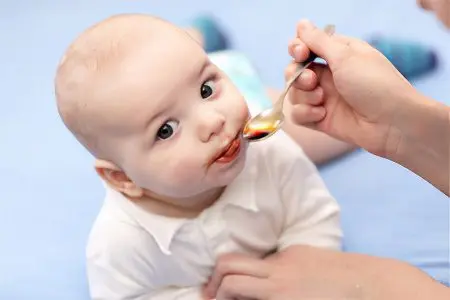
In children of the first year of life, anemia can develop due to the impact on their body of negative factors both during intrauterine life and after the baby is born. Those causes that affected the child’s body during its intrauterine existence are called antenatal factors. They do not allow iron to accumulate in the body of the fetus in sufficient quantities. As a result, anemia develops in the crumbs during the period when he is still breastfeeding.
These factors include:
Presence of anemia in a pregnant woman.
Pregnancy toxicosis.
Infections transmitted by the expectant mother.
Fetoplacental insufficiency.
Risk of miscarriage.
Simultaneous bearing of several children at once.
Placental abruption.
Too early or too late cord ligation.
If a child was born with a large weight, or, conversely, premature, then anemia will develop in him with a greater degree of probability than in a healthy baby. The same is true for twins and children with developmental anomalies.
In the period up to a year, anemia can manifest due to a number of postnatal factors, including:
Feeding a child with milk mixtures that are not adapted to the age of the crumbs.
Feeding the baby whole cow or goat milk.
The introduction of complementary foods later than the prescribed time.
Errors in the nutrition of the child.
Violations in the process of absorption of iron in the intestines of crumbs.
The child must eat right. The best product for him is mother’s milk. There is not very much iron in it, but it is absorbed quickly in the child’s body, as it has a special form (lactoferrin). This allows immunoglobulin A to show its antibacterial properties.
Classification of anemia in children
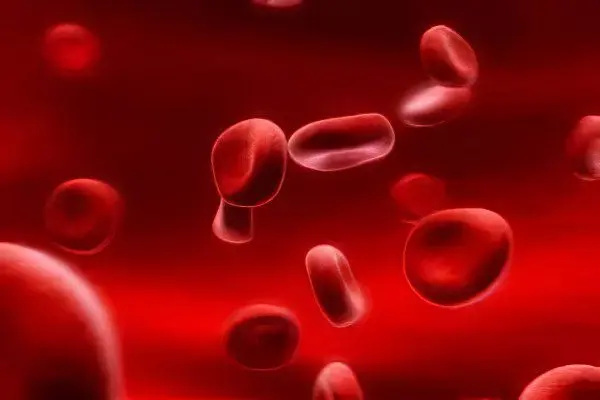
Classification of anemia in children depending on the mechanism of development of the disease and its causes:
Posthemorrhagic anemia, which are provoked by blood loss (chronic and acute).
Anemia associated with impaired hematopoiesis:
iron deficiency anemia.
Hereditary and acquired iron-saturated anemia.
Megaloblastic anemia associated with deficiency of folic acid and vitamin B12.
Dyserythropoietic anemias (acquired and hereditary)
Aplastic and hypoplastic anemia against the background of oppression of hematopoiesis.
Hereditary and acquired hemolytic anemia (autoimmune anemia, membranopathies, hemoglobinopathies, etc.).
Degrees of anemia in children
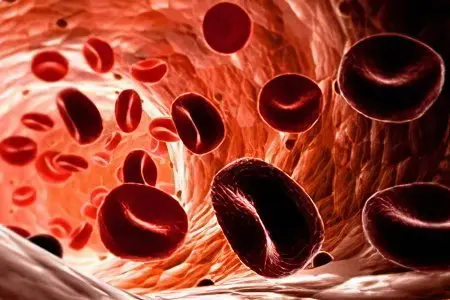
Lightweight
First, the child develops pre-latent anemia, when the level of iron begins to decline, but it is still enough to meet the needs of the body. However, this negatively affects the activity of enzymes in the intestine. As a result, iron from food will be absorbed poorly. This is a mild stage of anemia.
Average
The next stage in the development of anemia is a latent iron deficiency. At the same time, the depot of the body is depleted, which affects the iron content in the serum part of the blood. The condition of a child with an average degree of anemia may be satisfactory, but the pathological processes in the body will already be running.
Heavy
The next stage in the development of anemia is the stage of clinical manifestations. During this period, anemia can be detected by blood counts. In it, the content of not only hemoglobin, but also red blood cells falls.
All cells of the body begin to suffer from oxygen starvation. This negatively affects the work of internal organs. The immunity of the child begins to decline, he gets sick more often, becomes susceptible to intestinal infections. Each such episode impairs the functioning of the intestine and leads to the fact that iron deficiency is further enhanced.
The child’s brain suffers from a lack of a microelement. He begins to lag behind in mental development from his peers. In parallel, hearing and vision are reduced.
Diagnostics
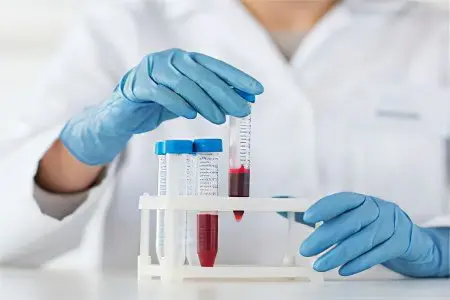
To suspect anemia in a child, a doctor needs only a visual examination and a questioning of the parents. To confirm the diagnosis, he will give a referral for blood donation.
Anemia accompanied by iron deficiency will be indicated by the following results:
Hemoglobin in the blood drops below 110 g/l.
The color index of blood is below 0,86.
The content of serum iron falls below 14 µmol/l.
The OZhSS indicator is growing and exceeds the mark of 63.
Serum ferritin drops to 12 µg/l and below.
The sizes of erythrocytes decrease, their shape is deformed.
Depending on the level of hemoglobin in the blood, the doctor can determine the stage of development of anemia:
If hemoglobin is at around 91-110 g / l, then they talk about mild anemia.
If the hemoglobin level drops to the level of 71-10 g / l, then this indicates a moderate course of the disease.
If hemoglobin is below 70 g / l, then the child has severe anemia.
When hemoglobin does not exceed the value of 50 g / l, then the anemia is super-severe.
To clarify the cause of anemia, the doctor may prescribe a number of additional laboratory tests, including:
Collection of bone marrow puncture with its further study. In iron deficiency anemia, there is a decrease in the level of sideroblasts.
The delivery of feces to determine the hidden blood in it.
Surrendering a sea otter to determine the eggs of parasites in it.
Delivery of the analysis of feces for dysbacteriosis.
In addition, the child may need to undergo an ultrasound examination of internal organs, FGDS, barium enema and colonoscopy.
Treatment of anemia in children

Childhood anemia responds well to treatment when the cause of its occurrence is established. Otherwise, the fight against the disease will be long and meaningless. If anemia develops against the background of massive blood loss, then the decision on how to treat it should be urgent. The child needs a red blood cell transfusion or he will die.
When a child is diagnosed with chronic blood loss, for example, with ulcerative colitis, efforts should be made to eliminate the underlying disease.
With abundant menstrual flow, the girl should be taken to an appointment with a gynecologist. She may need a hormonal adjustment. You may also need the help of an endocrinologist.
If eggs of parasites are found in the feces, then deworming of all family members should be carried out.
Comprehensive measures aimed at the treatment of iron deficiency anemia:
The menu needs to be adjusted.
Be sure to observe regimen activities, according to the age of the child. He should spend enough time outdoors, engage in physical activity, go to bed on time.
On the recommendation of the doctor, the child should receive iron supplements.
Depending on the symptoms of the disease, efforts should be made to eliminate them.
Diet is a prerequisite that allows you to get rid of anemia. The child must eat well. The best product for a baby is mother’s milk. It contains iron, which is absorbed as fully as possible by the intestines of the crumbs.
During the first year of life, the baby’s metabolic processes are very active, so the supply of iron that he received from his mother is very quickly depleted. In this regard, the supply of microelements should be carried out during the introduction of complementary foods, with food.
If anemia is diagnosed in an infant, then they begin to introduce complementary foods a month earlier. Such children are not recommended to offer rice porridge, semolina and bearberry. Emphasis must be placed on the box, buckwheat and millet. Meat for babies with anemia is offered starting from six months. If the child is formula-fed, then he should receive mixtures that are additionally enriched with iron.
If the child suffers from disorders in the functioning of the digestive system, then herbs can be offered to him. It is useful to give the baby decoctions of wild rose, nettle, dill, mint, elecampane, red clover, etc. However, before starting treatment, you should consult a doctor. It is also necessary to carefully monitor the reaction of the crumbs to such drinks and not to miss the development of an allergic reaction.
If anemia is diagnosed in a child older than a year, then his diet should be enriched with foods that are sources of iron, among them:
Red meat: beef and veal.
Beef tongue and veal kidneys.
A fish.
Pig liver.
Oysters and seaweed.
Wheat bran.
Chicken egg yolk.
Oat flakes.
Legumes.
Buckwheat grain.
Walnuts and hazelnuts, pistachios.
Fruits: apples, peaches, etc.
There are also products that should be excluded from the menu of a child with anemia, or their consumption should be minimized. They do not allow iron to be absorbed normally, which only contributes to its strengthening.
These products include:
Chocolate, black tea, cocoa, beets, spinach, peanuts, almonds, sesame seeds, lemon, soy products, sunflower seeds. These products contain oxalates, which prevent iron from being fully absorbed.
Phosphates have a similar effect as oxalates. There are especially a lot of them in sausage, processed cheese, canned milk.
In addition to oxalates, tea contains tannins. Their consumption in children with anemia should be limited.
A preservative such as ethylenediaminetetraacetic acid is dangerous for a child with anemia.
In addition, the absorption of iron is negatively affected by the intake of certain drugs, for example, antacids and antibiotics from the tetracycline group.
The following substances are able to enhance the absorption of iron in the stomach: ascorbic, malic and citric acid, fructose. This group also includes the drugs Cysteine and Nicotinamide.
Treatment of anemia is impossible without taking iron supplements. It is allowed to use complex medicines, which, in addition to this microelement, contain other useful additives.
For the treatment of anemia in childhood, the following drugs are used:

Ferroplex.
Ferrous fumarate.
Gemofer.
Maltofer.
Ferrum lek.
Aktiferrin.
Totem
Tardiferon.
Ferronate.
Maltofer fol and pr.
If the child is small, then he is prescribed drugs in liquid form (in suspension, drops or syrup). The drug Maltofer and Ferlatum are well absorbed by the body. The main active ingredients on which these products are based do not interact with products and rarely provoke the development of adverse health effects.
The dose of the drug should be selected by the doctor, based on the results of the tests. It can be increased gradually, smoothly bringing to the required. If the child takes drugs by mouth, then they should be given 1-2 hours before meals. Wash down the drug with water or juices.
After 7-14 days, there should be a positive trend in treatment. In the blood of the child, the number of reticulocytes and hemoglobin will increase. Normally, the hemoglobin level should rise to 10 g / l after 7 days. Therefore, blood tests will need to be taken regularly.
If after 30 days from the start of therapy, the hemoglobin level has not returned to normal, then you need to look for another cause of anemia.
It can hide in the following states:
The child has blood loss, the source of which cannot be established.
The dosage of iron is too low to make up for its deficiency.
There is a lack of vitamin B12 in the body.
The child has worms or inflammation of the organs that make up the digestive system. It is also impossible to exclude the presence of any neoplasm inside the body.
If the child does not tolerate the intake of iron-containing drugs, then he is prescribed injections of the drug. Also, injections are used in the case when the child develops acute anemia, which is characterized by a severe course and in the absence of effect after 14 days from the start of treatment. Injection administration of the drug is indicated when it is impossible to absorb iron in the intestine, for example, against the background of ulcerative colitis.
Since with iron deficiency anemia, the child’s body is highly likely to suffer from a lack of a vitamin, doctors prescribe vitamin-mineral complexes. Also, on the recommendation of a doctor, homeopathic medicines are allowed.
In severe anemia, rh-EPO preparations, epoiins a and b, are prescribed. This allows you to refuse the transfusion of red blood cells to the child, since hemotransfusion is associated with a high risk of complications. Recombinant human erythropoietin is administered subcutaneously. These can be drugs Eprex and Epokran.
Contraindications for treatment with iron preparations are:
Sideroachrestic anemia (iron-saturated anemia). In this disorder, during the production of hemoglobin in the bone marrow, iron is not used, which causes its low concentration in red blood cells.
Hemosiderosis. The reasons for the development of this disease remain unknown. It is possible that the pathology has an autoimmune nature. The vessels are damaged, red blood cells go beyond the bloodstream, which leads to the accumulation of hemosiderin in the skin.
Hemochromatosis is a disease that is accompanied by impaired absorption of iron in the intestine. It begins to accumulate in the cells of the internal organs and provokes their fibrosis.
If the lack of iron in the body of a child is only an assumption of the parents or the doctor, but tests to determine its level in the blood have not been carried out.
Hemolytic anemia, accompanied by mass death of red blood cells.
Therefore, before starting treatment, it is necessary to conduct a comprehensive diagnosis, which allows to exclude all contraindications to the appointment of iron preparations.
Prognosis and prevention
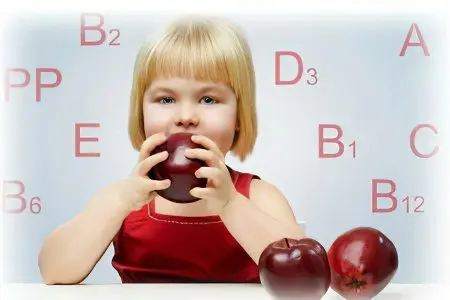
If the reason why the child has anemia was established, and the treatment was prescribed on time, then the prognosis for a complete recovery is favorable. When therapy is delayed, iron deficiency will increase. This will entail a delay in the physical and mental development of the child, a deterioration in immunity and frequent illnesses.
Preventive measures designed to prevent anemia should be carried out both during the intrauterine development of the baby and after his birth.
Measures to prevent fetal anemia that a pregnant woman should follow:
She needs to observe the regime of the day: enough time to rest, as much as possible to walk in the fresh air.
Be sure to follow the rules of a healthy diet.
As prescribed by the doctor, a woman needs to take iron supplements and vitamins.
Anemia in a pregnant woman should be detected and treated in time.
Prevention of anemia in the period after the birth of a child consists of the following measures:
If possible, the baby should be breastfed.
Complementary foods should be introduced according to age norms. Products must be selected carefully.
If the child is bottle-fed, then the formulas should be adapted according to his age.
It is important to follow the basic rules of caring for a baby.
The pediatrician should regularly examine the child. It is unacceptable to ignore scheduled visits to the doctor.
Be sure to deal with the prevention of rickets and anemia.
Every child, regardless of his age, should spend as much time as possible in the fresh air, eat right, do gymnastics, visit a massage therapist. A prerequisite for the full growth and development of children is the observance of regimen measures. If the child is at risk for developing anemia, then he is prescribed a course of iron supplements.
They are shown to the following children:
Gemini.
Children born prematurely.
Children with congenital developmental anomalies.
Children with malabsorption syndrome.
Children during periods of rapid growth and development, as well as adolescents during puberty.
Girls during heavy menstruation.
After bleeding, regardless of the etiological factor.
After operation.
If a child was born prematurely, then from 2 months to 2 years, they are prescribed iron supplements for prophylactic purposes. RF-EPO can also be used.









